Feng Shui, an ancient Chinese art, is rooted in the belief of harnessing the universe’s energies to achieve harmony between individuals and their environments. Spanning over 3,000 years, this practice emphasizes the intricate bond we share with our surroundings. Our homes, more than mere shelters, echo our emotions, aspirations, and energies. This post delves deep into Feng Shui tips, aiming to guide readers in crafting spaces that don’t just house, but truly resonate and rejuvenate. Dive in to transform and level up your living spaces, ensuring the flow of positivity and prosperity.
Understanding Basic Feng Shui Principles

Dipping our toes into the world of Feng Shui is akin to unlocking the language of our living spaces—a dialogue between environment and inhabitant. This age-old Chinese art, while intricate, revolves around a few foundational principles that, when understood, can pave the way for homes that nurture, inspire, and align with our true selves. Let’s embark on this enlightening journey, deciphering the fundamental tenets of Feng Shui, and discover the magic that happens when space harmoniously speaks to the soul.
The Five Elements of Feng Shui
The Five Elements—Wood, Fire, Earth, Metal, and Water—are pivotal in Feng Shui, serving as tools to bring balance to our living spaces. Each element signifies different energies and can transform the mood and functionality of a space. For instance, Wood, symbolizing growth and vitality, can enhance creativity, while Water, representing flow and abundance, can introduce a soothing, tranquil vibe.
Yin and Yang – The Dance of Dualities
Central to Feng Shui is the concept of Yin and Yang, representing the dual facets of life. Yin, the feminine principle, is passive, soft, and introspective, while Yang, the masculine counterpart, is active, bright, and extroverted. In Feng Shui, a harmonious space effortlessly marries these dualities. For example, a room painted in soft pastel shades (Yin) might be complemented with vibrant art pieces or bright lighting (Yang), ensuring neither dominates, but instead, they coalesce to create a harmonious ambiance.
Qi -The Life Force of Your Home
Qi (pronounced “chi”) is the life energy, the unseen force that flows in and around us. In Feng Shui, the quality and flow of Qi in a home can influence its inhabitants’ well-being and fortune. Blocked or stagnant Qi can lead to discomfort or health issues, while smooth-flowing Qi promotes positivity, health, and prosperity. The arrangement of furniture, choice of colors, and decluttering are among the many techniques used in Feng Shui to optimize this vital energy flow within a home.
Bagua Map or Feng Shui Compass
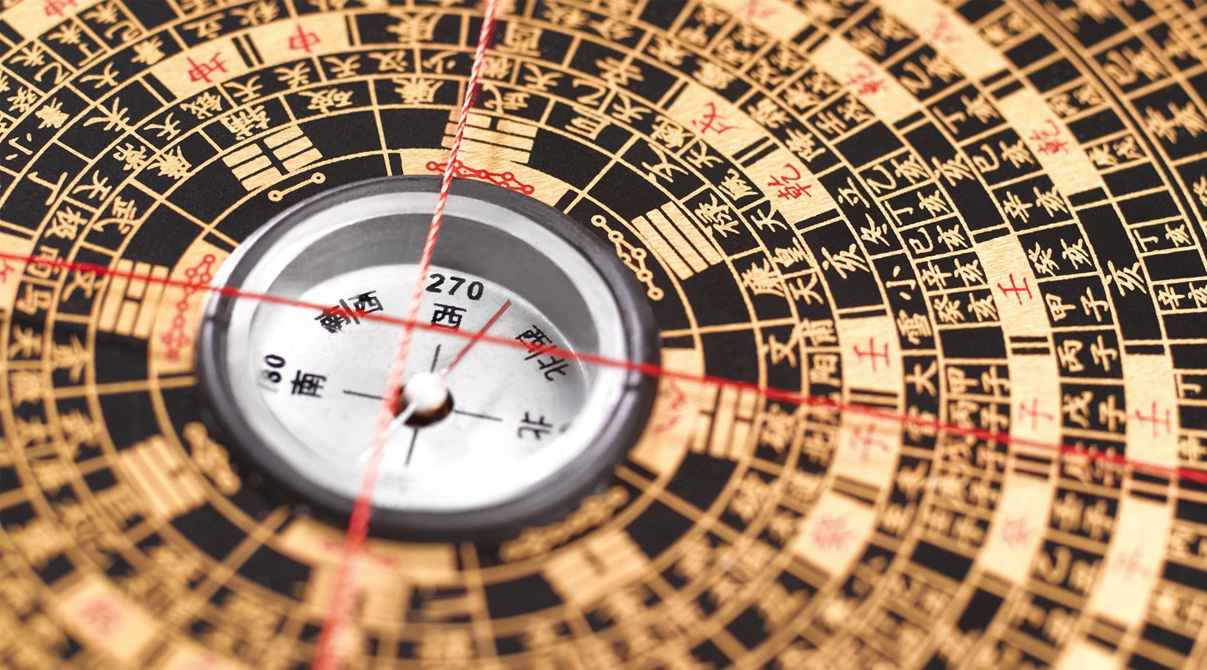
The Bagua map, often termed the Feng Shui compass, is a vital tool, charting the energy fields that influence our living environments. Think of it as a blueprint for orchestrating harmony and balance in one’s space. Divided into eight areas (or “guas”), each corresponding to crucial life aspects, the Bagua map provides insights into how specific areas of a home can influence specific areas of one’s life.
Superimposing the Bagua Map onto Your Floor Plan
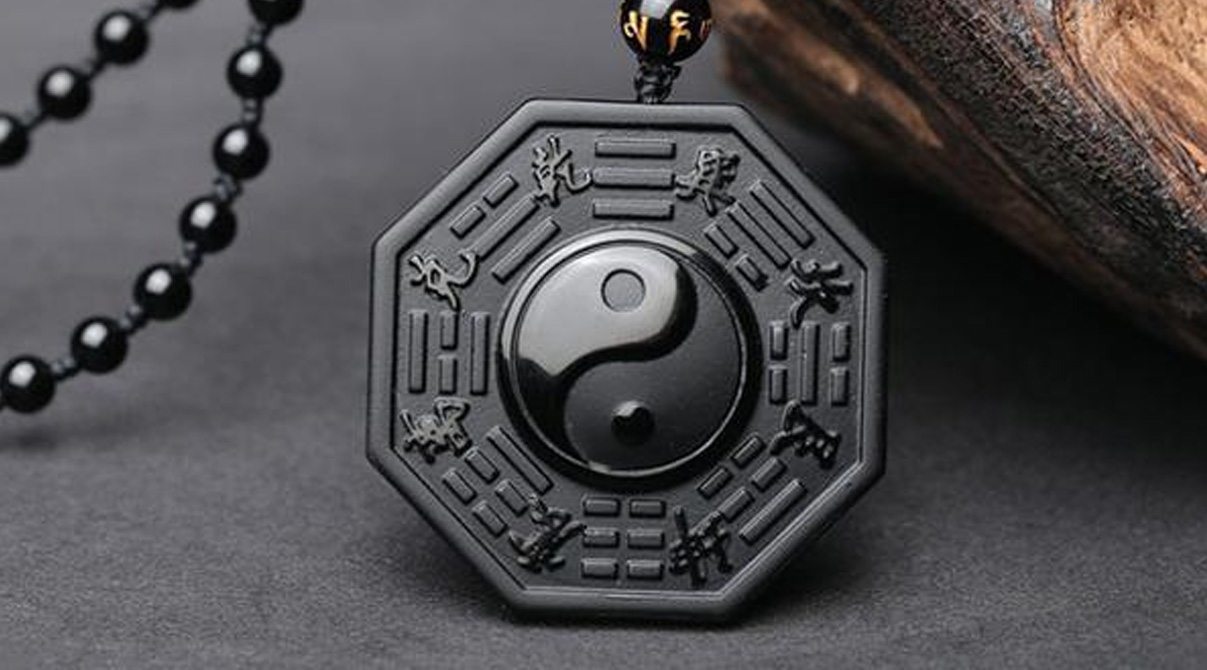
To superimpose the Bagua map on your home’s floor plan, start by sketching a simple overhead view of your home, marking doors and major rooms. Now, imagine or overlay the octagonal Bagua map onto this sketch, ensuring the bottom edge aligns with your main entrance. This will section your space into different areas, each corresponding to a particular “gua” or life aspect. This overlay can guide adjustments in decor, color, and organization, allowing the energy to resonate in each life domain.
Each segment or “gua” of the Bagua map addresses a unique facet of life:
- Kan (North) – Career & Path in Life: Influences one’s journey and life’s work.
- Qian (Northwest) – Helpful People & Travel: Relates to supportive individuals and journeys.
- Dui (West) – Children & Creativity: Impacts creativity and offspring.
- Gen (Northeast) – Knowledge & Self-cultivation: Governs personal growth and inner wisdom.
- Zhun (East) – Family & Health: Represents health and familial ties.
- Li (South) – Fame & Reputation: Influences recognition and social standing.
- Xun (Southeast) – Wealth & Abundance: Governs prosperity and blessings.
- Kun (Southwest) – Partnership & Love: Reflects romantic relationships and marital harmony.
- Tai Chi: Centrally located and of equal importance is the ninth area, Tai Chi, symbolizing overall well-being and balance.
Feng Shui Tips to Level up Your Home
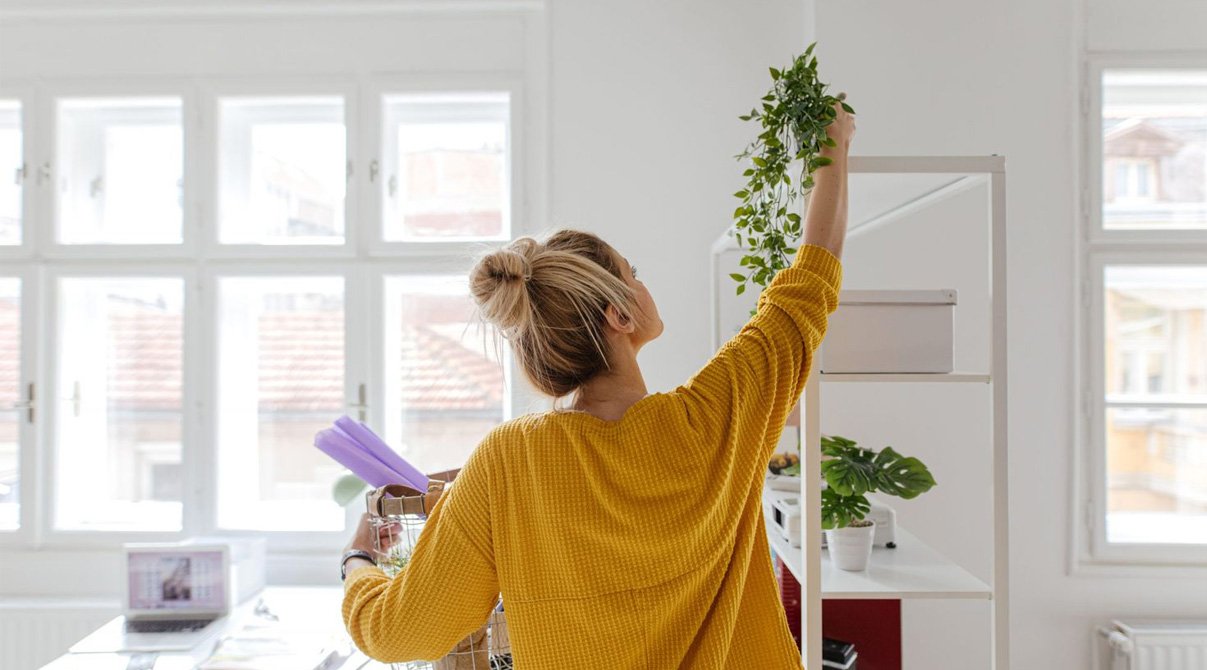
Feng Shui ancient principles guide us in curating environments that echo peace, prosperity, and purpose. Whether it’s the strategic placement of a mirror or the vibrant dance of a houseplant, every tweak and turn influences the invisible energies that envelop us. Dive into these Feng Shui tips and let your home not just shelter, but truly harmonize with your essence.
Room-by-Room Feng Shui Tips
Each room in our home serves a unique purpose, and thus, each whispers a different tale of energy, comfort, and purpose. By tailoring Feng Shui principles to each space’s individual essence, we can craft areas that not only meet their functional demands but also resonate with our deepest aspirations and emotional needs. From the communal warmth of the living room to the sanctuary-like reprieve of the bedroom, let’s dive deep into creating spaces that truly ‘feel’ right.
Living Room
The living room, a hub of interaction, should radiate warmth and ease. Furniture should be arranged in a semi-circle or octagonal shape, promoting fluid conversation. Avoid placing seats with their backs to doors, as it can be unsettling. Also, ensure there’s ample space for movement, ensuring a free flow of Qi.
Colours deeply influence our mood. Soft neutrals can create a calm backdrop, while pops of vibrant shades like blue or green can stimulate conversation and creativity. Aim for balanced neutral shades for large areas (walls, major furniture) and brighter tones for accessories. Natural light is a treasure, imbuing spaces with life-affirming energy. Enhance daylight with sheer curtains, and for evenings, opt for layered lighting—ambient, task, and accent. This ensures no dark corners, keeping Qi lively and flowing.
Bedroom
Your bed should provide a clear view of the bedroom door but not be directly in line with it. This offers a sense of security. It’s also wise to have a strong supporting wall behind the bed, promoting stability and grounding.
A clutter-free bedroom is a sanctuary. By regularly decluttering, one promotes a tranquil energy flow, essential for rest and rejuvenation. Create smart storage solutions and regularly assess items for their utility and emotional resonance. Soft, muted tones like lavender, pale blue, or even creamy whites foster relaxation. For romance, subtle pinks or deeper tones like burgundy can be integrated through textiles or decor.
Kitchen
In Feng Shui, the stove represents wealth and health, while the sink embodies water and money drainage. Ideally, they shouldn’t be directly opposite each other to prevent the clashing of fire and water energies. A harmonious placement promotes nourishment and prosperity.
An orderly kitchen signifies good health and wealth. Store utensils and gadgets efficiently, ensuring the countertops remain clutter-free. Fresh fruits and veggies, when displayed, attract abundance. Incorporate green plants like herbs. They not only purify the air but also introduce a lively Qi, emphasizing growth and health.
Bathroom
Mirrors in the bathroom can amplify water energy. Ensure they don’t reflect the toilet, as it’s seen as flushing away positive energy. Instead, let them reflect pleasant views or decor to enhance positive Qi.
Water in Feng Shui can drain energy. To counteract this, maintain cleanliness and keep clutter to a minimum. Closed storage solutions and regular tidying rituals can assist. Introduce Earth elements to counterbalance the dominant Water energy. This can be through beige or sandy tones in decor, or ceramic pots and accessories. They ground the energy and prevent it from becoming too overwhelming.
Optimizing Entryways and Hallways
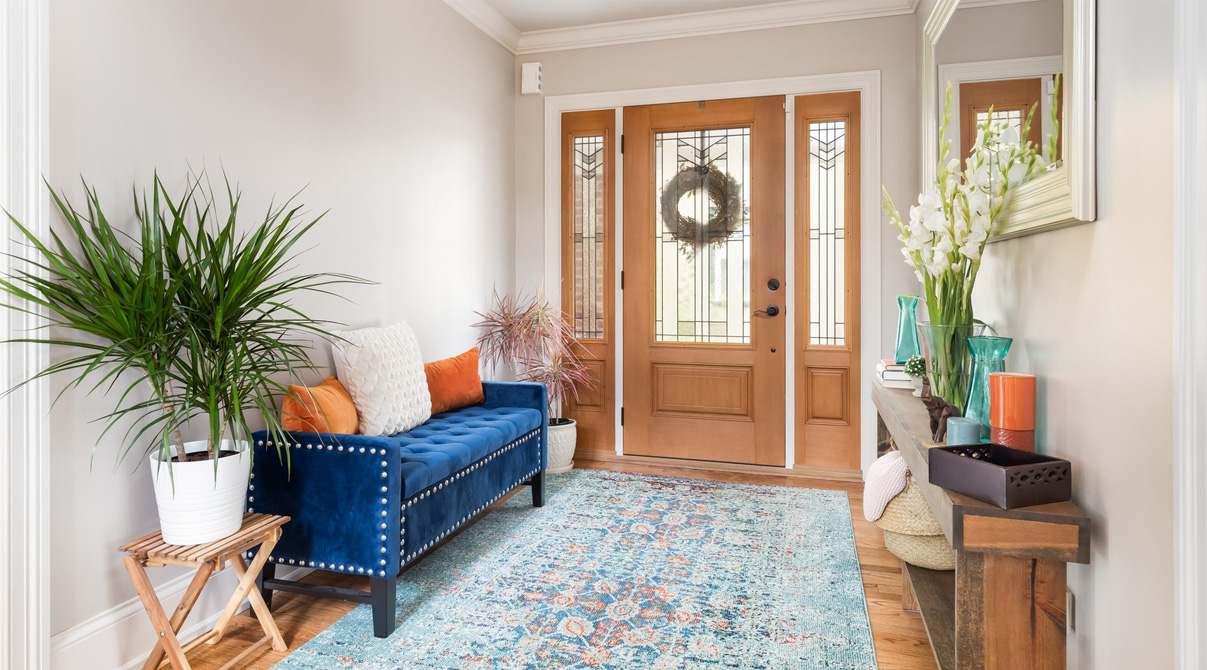
The initial point of contact between our homes and the external world, entryways, and hallways set the stage for the energy flow within. Their design and upkeep don’t just impact our mood as we come and go; they play a crucial role in how Qi (life energy) circulates throughout our dwelling. Let’s uncover the Feng Shui wisdom behind these transitional spaces.
Significance of the Front Door
In Feng Shui, the front door is often termed the ‘Mouth of Qi.’ It’s the primary portal where energy enters your home. A welcoming, strong, and clear front door attracts positive energy, while a neglected one can lead to stagnant or negative Qi. Therefore, it’s vital to ensure your front door is in good condition, free from obstructions, and exudes an inviting vibe, setting a positive tone for the rest of the home.
Hallway Clarity for Positive Qi
Hallways serve as arteries of our homes, directing Qi from the front door to various rooms. A cluttered hallway hinders this flow, leading to stagnant energy. To promote a positive energy flow, keep hallways clear and free from obstacles. Also, if your hallway is long and narrow, consider adding elements that can slow down the rush of energy, like rugs or artwork, ensuring Qi moves gently and nourishes all corners of your home.
Feng Shui recommendations for entryways and hallways include:
- Mirrors: Mirrors can expand spaces and double the energy. However, avoid placing mirrors directly opposite the front door, as they can reflect the entering Qi right back out. Instead, place them on a side wall to expand the space and increase the amount of light.
- Plants: Green plants in hallways or entryways introduce a sense of growth, vitality, and freshness. They not only uplift the space aesthetically but also enhance the Qi, making it vibrant. Choose plants that are proportionate to the space and ensure they’re well-maintained.
- Lighting: Light is a Qi activator. Bright, well-lit hallways and entryways invite and circulate positive energy. If your entryway lacks natural light, consider adding warm artificial lights. Overhead fixtures combined with side lamps can create a layered, welcoming illumination. Consider using bulbs that mimic natural daylight for a soothing ambiance.
Crafting a harmonious entryway and hallway isn’t merely about aesthetics; it’s about setting an energetic foundation for the entire home. Through mindful arrangements and an understanding of Feng Shui principles, one can ensure these spaces radiate warmth, positivity, and promise every time we step through the door.
Bringing Nature Indoors
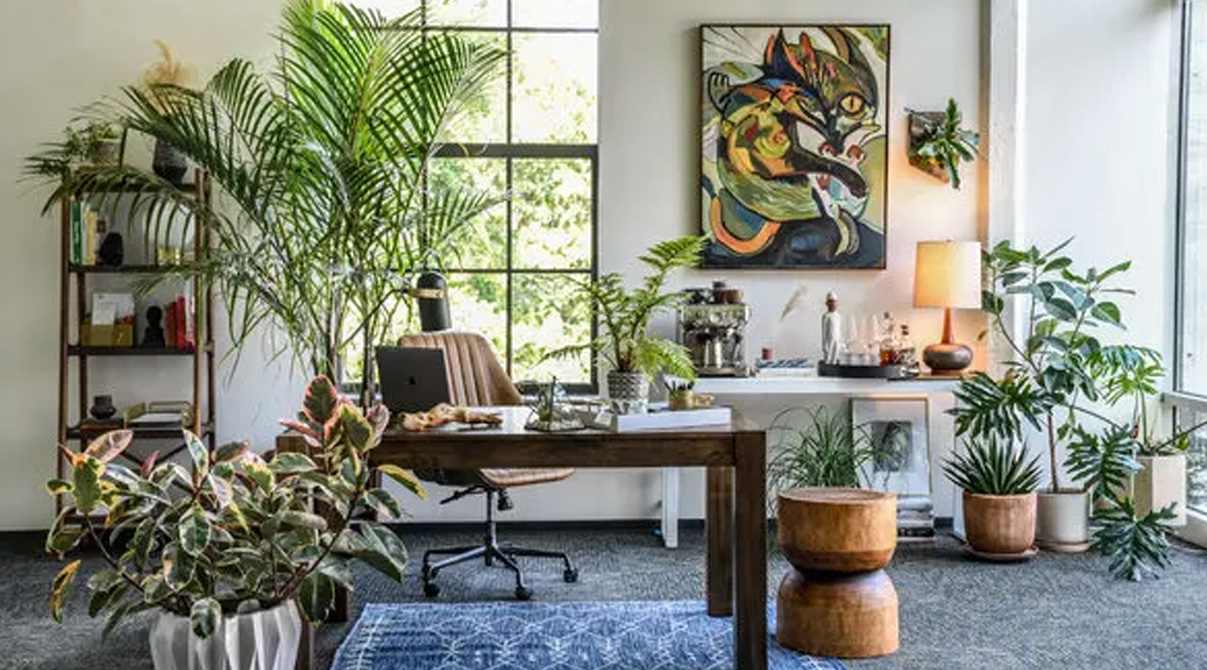
Nature, in its untamed magnificence, is a fount of balance, energy, and harmony. Integrating its elements into our indoor spaces not only rejuvenates the aesthetic but also fortifies the flow of Qi, the life force that Feng Shui venerates. From verdant greens to calming stones, let’s understand how nature’s touch can transform interiors.
The Green Vitality of Plants in Feng Shui
Plants, with their growth and vigor, are symbolic of life, growth, and fresh Qi. Incorporating them is akin to inviting a vibrant energy that cleanses, uplifts, and infuses spaces with positivity. Their green color resonates with the Wood element in Feng Shui, enhancing creativity, growth, and abundance. Moreover, they help purify the air, making living spaces healthier.
Choosing and Placing the Right Plants
Avoid plants with thorny or aggressive structures, like cacti, in central living spaces, as they can introduce ‘sharp’ energy. The placement should ensure plants get adequate light and care, enhancing their life force and, by extension, the Qi of the space. While most plants introduce a positive energy, some are particularly favored in Feng Shui:
- Bamboo: Symbolizing resilience and luck, bamboo is often recommended for living rooms or home offices.
- Peace Lily: Known for its air-purifying qualities, it can bring calm and purity to any room.
- Ficus: This plant can improve air quality and bring robustness into spaces. Best for spacious rooms given its size.
- Snake Plant: Another excellent air purifier, it’s ideal for bedrooms as it releases oxygen at night.
- Jade Plant: Symbolizing wealth, it’s apt for desks or business spaces.
Stones and Water
Nature, in all its elements, whispers tales of balance, harmony, and vitality. By honoring and introducing these elements via Feng Shui, we not only beautify our homes but also curate spaces that mirror the earth’s wisdom and equilibrium. Stones and water can create a symphony of energies when introduced thoughtfully:
Stones embody Earth’s grounding and stabilizing energy. Whether it’s a decorative stone arrangement, pebble tray, or geodes, they bring in solidity, support, and anchorage. Place them in areas where stability is sought, maybe workspaces or meditation corners.
Representing flow, abundance, and adaptability, water elements like fountains or fish tanks introduce dynamic energy. However, water placement is crucial. Living areas or the north sector of homes (associated with career) are ideal. Avoid water elements in bedrooms, as they might introduce too much Yang energy, disrupting sleep.
Decluttering — The Key to Energy Flow
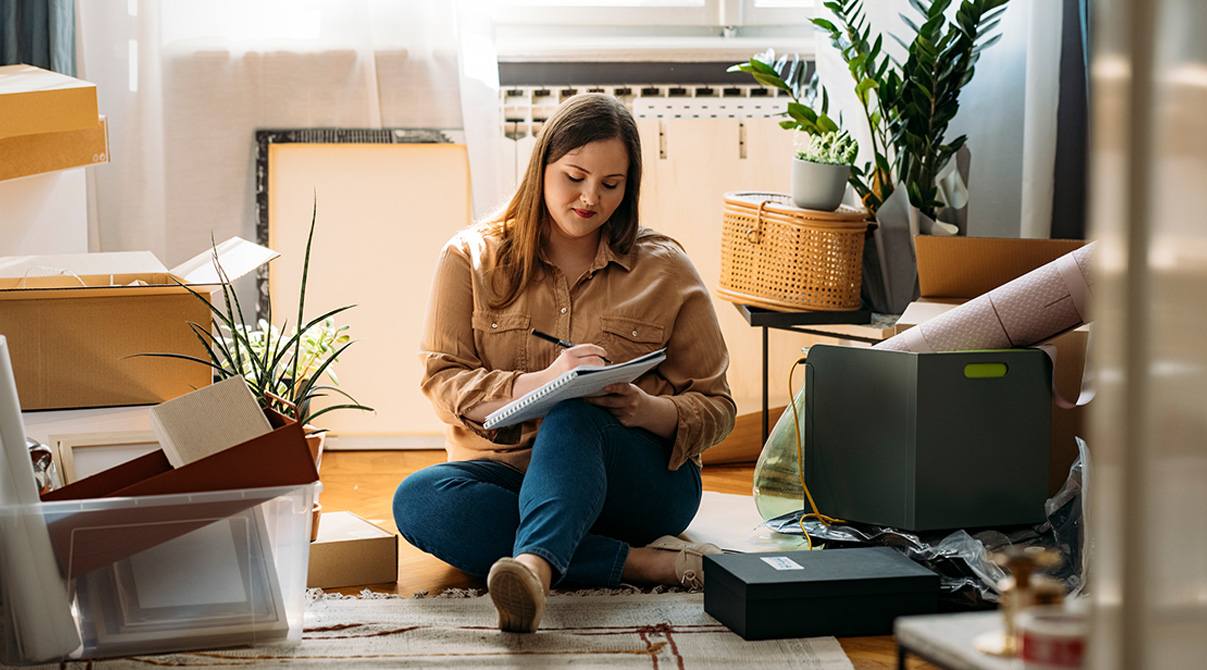
Amidst the ever-evolving tapestry of our lives, objects, and possessions accumulate, often leading to spaces that feel weighed down and stagnant. Feng Shui places an emphasis on the decluttering process, viewing it as pivotal in rejuvenating the Qi of a space. Let’s delve into the transformative power of decluttering and how it harmonizes both our homes and hearts.
Spiritual and Practical Benefits
In the realm of Feng Shui, decluttering is more than a mere tidying up; it’s a spiritual journey that carries tangible rewards. On a spiritual level, decluttering paves the way for energetic renewal. As we clear away the physical remnants of the past, we facilitate a more vibrant circulation of Qi, breathing life and vitality into our spaces. This rejuvenated environment mirrors back onto our mental state, bestowing clarity and reducing the fog of anxiety.
Additionally, each object often entwines with memories and emotions; hence, the act of letting go can symbolize the release of old burdens or traumas, offering catharsis and emotional healing. On the practical side, decluttering ushers in functional, efficient spaces that enhance daily living.
The harmony achieved in our surroundings echoes a sense of empowerment and control, not just over our possessions but also over the trajectory of our lives. In essence, decluttering in Feng Shui is a dance of the soul with the tangible, where both the heart and the home find their rhythm.
A Step-by-Step Guide to Decluttering with Intention
Decluttering is not merely about creating visually pleasing spaces; it’s a transformative tool in Feng Shui, pivotal for crafting homes that breathe, grow, and resonate with our deepest aspirations. By addressing clutter, we not only sculpt our surroundings but also mold the very essence of our lives. Here is a step-by-step guide to declutter in Feng Shui:
- Set Clear Intentions: Begin with understanding your purpose. Are you seeking tranquility, space for a new endeavor, or simply a more harmonious home?
- Start Small: Instead of overwhelming yourself, start with a drawer, a corner, or a single room. This focused approach can offer quick satisfaction and momentum.
- Categorize Items: Sort things into categories: keep, discard, donate, or recycle. Trust your instincts and emotions when deciding.
- Cleanse the Space: After decluttering, cleanse the space using sage, essential oils, or simply by opening windows to let fresh air in. This acts as a reset, ushering in new, vibrant energy.
- Organize with Care: For items you keep, ensure they have a designated space. Using organizers, boxes, or storage solutions can assist in maintaining the decluttered feel.
- Regularly Reassess: Decluttering is an ongoing process. Regularly revisit spaces to ensure they remain clutter-free and energetically vibrant.
- Express Gratitude: As you let go of items, express gratitude for their presence in your life. This creates a positive energy, ensuring a harmonious release.
The Impact of Clutter on Qi
Clutter acts as an energetic dam, blocking or impeding the natural flow of Qi. Spaces crowded with unused or redundant items create a stagnation of energy. This stagnancy can manifest as feelings of being stuck, overwhelmed, or even lethargic in one’s life. Additionally, clutter can amplify confusion and chaos, both in our external environments and internally within our thoughts and emotions.
Using Feng Shui Enhancements

In the harmonious world of Feng Shui, the spaces we inhabit become reflections of our inner world, resonating with our aspirations, challenges, and desires. To address imbalances or augment positive energies, Feng Shui introduces ‘cures’ or ‘enhancements’ – intentional objects designed to either neutralize negative influences or amplify positive ones. Let’s delve into these enigmatic tools and understand their essence.
Significance of Feng Shui Cures and Enhancements
At its heart, Feng Shui is about achieving balance – whether it’s the Yin and Yang, the Five Elements, or the flow of Qi. However, architectural limitations, design constraints, or just life circumstances might introduce disharmonies. That’s where cures and enhancements step in. They act as corrective measures, helping to recalibrate spaces, draw auspicious energy, or deflect negative vibes.
In Feng Shui, Crystals, Wind Chimes, and Mirrors are considered as tools or enhancements that are used to balance and enhance the energy flow (Qi) in a space. Here’s a brief overview of each:
Crystals
Crystals are believed to have powerful energy properties and are used to harmonize and balance the energy in a space. Different crystals are associated with various energies and intentions. They can be strategically placed in different areas of a room or home to promote specific energies. Different crystals have varied properties:
- Clear Quartz: Amplifies clarity and can energize spaces.
- Rose Quartz: Invokes love and compassion; ideal for bedrooms or relationship corners.
- Amethyst: Boosts spiritual growth and brings protective energies.
Wind Chimes
Wind chimes are used to break up stagnant or negative energy and promote the flow of positive energy in a space. The sound they produce is considered soothing and can help in creating a more harmonious environment. Wind chimes are typically hung near windows or doorways where they can catch the breeze and create sound. They are especially beneficial in areas where energy may be stuck or in corners of a room.
Mirrors
Mirrors are versatile tools in Feng Shui and can be used to reflect and redirect energy. They are employed to expand space, bring more light into a room, and correct imbalances.
Placement: Mirrors are strategically placed to enhance the energy flow. For instance, they can be used to reflect beautiful views, double the abundance in a room, or correct the placement of a piece of furniture.
Handling Challenging Spaces

In Feng Shui, challenges are merely opportunities in disguise. Every home, with its unique architectural idiosyncrasies, tells a story. While some of these features are delightful quirks, others might pose energetic challenges when viewed through the lens of Feng Shui. From ceilings that feel a tad too low to staircases that seem to rush energy out of the door, each element impacts the home’s energy dynamics. Let’s explore how we can transform these challenges into opportunities for balance and harmony.
Rooms with Low Ceilings
Rooms often come with their set of quirks. For instance, low ceilings can impart a sense of compression, potentially making inhabitants feel trapped or stifled. To counter this, one can introduce upward-facing lights that give the illusion of elevating the energy. Similarly, integrating vertical design elements, be it tall indoor plants or vertically oriented wall art, can divert attention upwards, mitigating the sense of oppression.
Rooms with Overhead Beams
In some homes, overhead beams can be a cause for concern. They carry a symbolic weight, sometimes leading to feelings of being suppressed or divided, especially when they’re positioned over resting places like beds. Minimizing their impact can be as simple as painting them the same color as the ceiling, making them less noticeable. Alternatively, using soft drapery or even a bed canopy can provide an energetic buffer against their pressing down energy.
Rooms with Sharp Corners
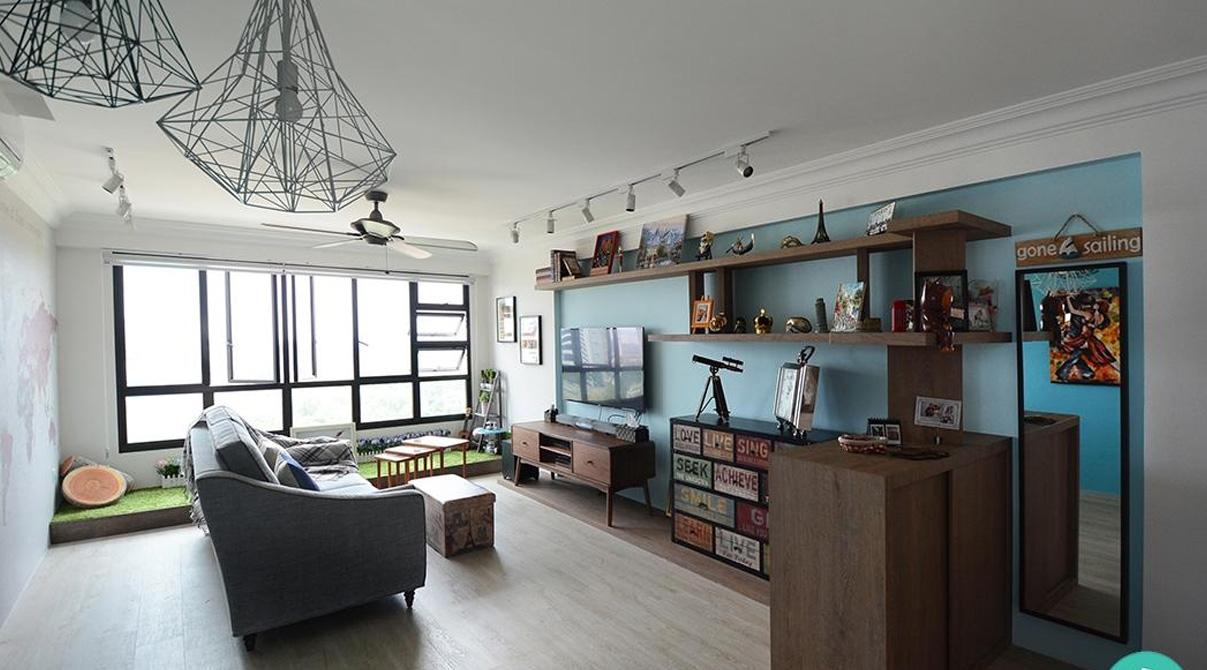
Then there are spaces with sharp corners or what Feng Shui experts might refer to as ‘poison arrows.’ These can direct a sort of aggressive energy towards living areas. One way to counteract this is by softening their impact. This could be achieved by strategically placing plants or softening fabrics in front of them. Even incorporating round furniture or decorative pieces can serve as a gentle counter to the pointed energy.
Staircases Facing the Front Door
A common architectural challenge in many homes is the presence of a staircase directly facing the front door. Addressing this requires slowing down the energy flow. Laying a rug between the door and the staircase, or placing a screen or tall plants as a barrier can help. Enhancing the lighting near the staircase or introducing artwork can also serve to draw the energy upwards and inwards, rather than letting it rush out.
Excessive Windows or Large Open Spaces
Rooms with an abundance of windows or expansive open spaces, while often visually stunning, bring their own Feng Shui challenges. Excessive windows might allow energy to escape too quickly. Using curtains or blinds to regulate this flow becomes essential. As for large open spaces, while they provide a sense of freedom, they can also lead to energy dispersion. Defining specific areas or zones using furniture or rugs can help concentrate and direct the Qi, ensuring a balanced and harmonious environment.
The Bottom Line
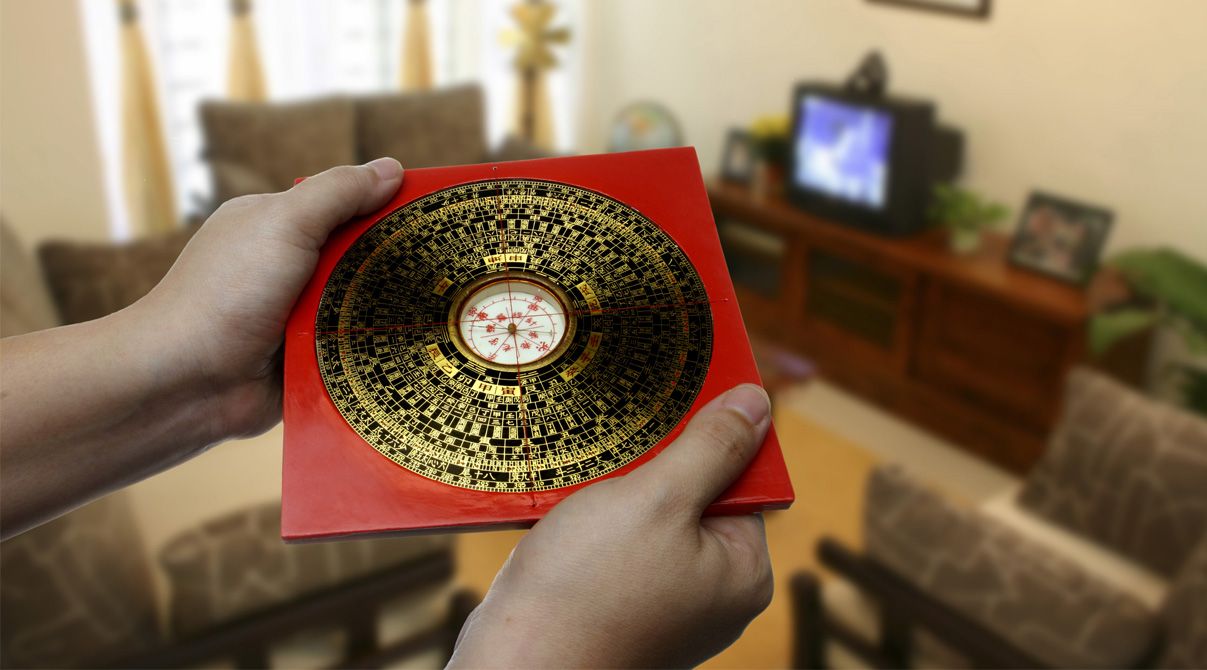
The realm of Feng Shui teaches us that our homes are more than just structures; they are living reflections of our energy and aspirations. The quest for a harmonious home environment in Feng Shui isn’t merely about following design principles; it’s about creating spaces that resonate with our soul. If you’re just beginning this journey, remember that small steps can lead to profound changes. Start with one room, or even one corner, and let your intuition guide you.
Over time, as you incorporate more Feng Shui elements, you’ll witness your home transforming into a sanctuary of balance and well-being. The essence of Feng Shui isn’t just about aesthetic alignment but achieving a balance that brings genuine comfort, peace, and prosperity into our lives. Embrace this ancient wisdom, and let your home be a testament to a life lived in harmony.